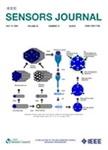版权所有:内蒙古大学图书馆 技术提供:维普资讯• 智图
内蒙古自治区呼和浩特市赛罕区大学西街235号 邮编: 010021

作者机构:Indian Inst Informat Technol Design & Mfg Elect & Commun Discipline Jabalpur 482005 India
出 版 物:《IEEE SENSORS JOURNAL》 (IEEE传感器杂志)
年 卷 期:2021年第21卷第2期
页 面:2035-2042页
核心收录:
学科分类:0808[工学-电气工程] 08[工学] 0804[工学-仪器科学与技术] 0702[理学-物理学]
主 题:Electroencephalography Feature extraction Emotion recognition Support vector machines Time-frequency analysis Brain modeling Wavelet analysis Optimized variational mode decomposition whale optimization algorithm eigenvector centrality method emotions recognition
摘 要:Emotions provide valuable information regarding habits, health, mental activities, etc. Emotion recognition has attracted wide interests in affective computing, medical, brain-computer interface, and other relevant fields. Emotion recognition from EEG signals has facilitated to impaired peoples to intact with real world. Multi-components EEG signal need to decomposed into set of components to extract the hidden information, empirical selection of decomposition parameters can lead to loss of information due to mode mixing, generation of noisy modes, poor signal synthesis, etc. In this paper, optimized variational mode decomposition is proposed for emotion recognition using single-channel EEG signals. The Eigenvector centrality method (EVCM) is employed for dominant channel selection. An optimum number of modes (K-opt) and penalty factor (alpha(opt)) are selected adaptively for decomposition of non- stationary EEG signals. Time-domain features are elicited from the modes of EEG signals. The posthoc analysis are employed for significant features selection, these features are used as input to different classifiers for emotion classification. The overall accuracy of 97.24% is achieved with an extreme learning machine classifier for a four emotion classification. The performance of the proposed method is evaluated by five performance parameters. F-1 score, false-positive rate, Mathew s correlation coefficient, and Cohen s Kappa of 0.9454, 0.94%, 92.92%, and 0.9633 is obtained. In comparison with traditional variationalmode decomposition and existing state-of-the-art using the same dataset, the proposed method shows improved performance of about 4% and 2%.